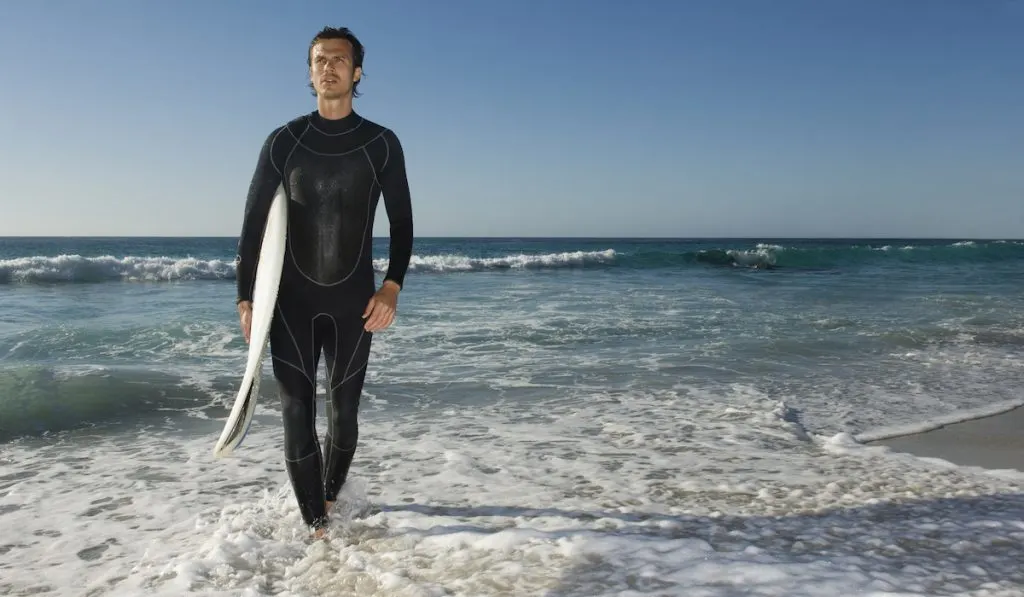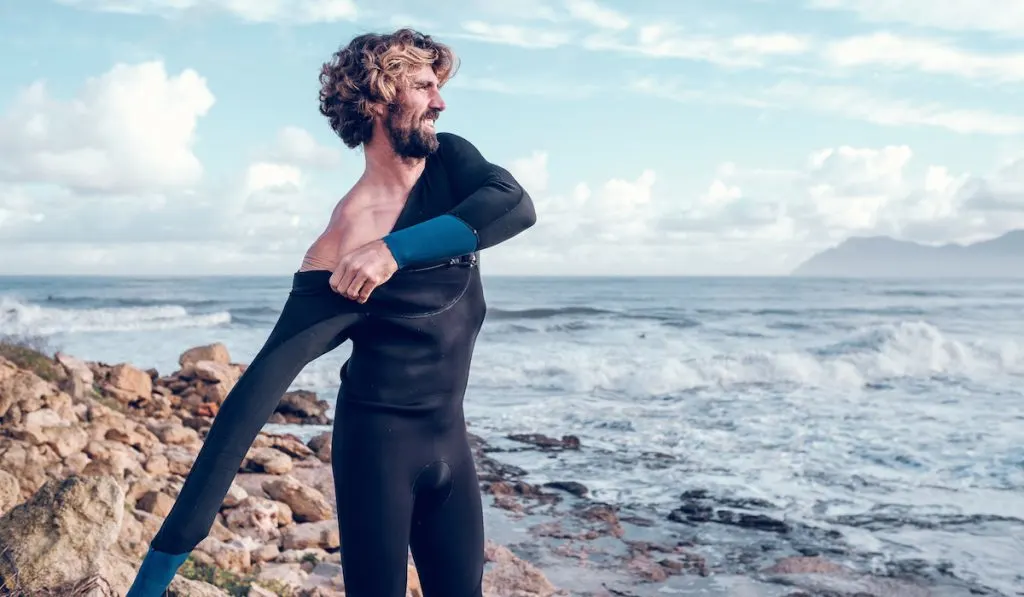Triathlons happen all year round in different climates across the world. If you’re new to the sport or you’re going to a new destination for a race, then eventually you’re going to come across some frigid water.
It gets cold out there, so a lot of racers turn to wetsuits to keep them warm. If you’re a surfer and you love to spend time in the ocean, then you probably already have a wetsuit laying around somewhere. Can you do a triathlon in a surf wetsuit?
You can do a triathlon in a surf wetsuit, as long as it meets triathlon guidelines. For the majority of races, the wetsuit must be under 5mm in thickness.
Most surf wetsuits are under, but some surf wetsuit makers build thicker wetsuits designed for colder water that is against triathlon regulations.

Wearing one of these in your event can get you disqualified, so you should make sure you’re under the 5mm guideline just to be safe.
Getting the right gear is part of racing well and having a good experience. Here are some of the benefits of using a surf wetsuit and some other options out there that you may want to consider.
Why People Wear Wetsuits in Triathlon Events
The main driver for why people wear wetsuits in a race is that it’s cold! If you’ve been to the West Coast of the U.S., then you know the water is cold most of the year.
Triathlons don’t only happen during the summer months. People are out for events in all seasons, that’s part of the fun.
You’ve got to stay warm and manage body heat in the water, though, if you want to run a good race.
Surf wetsuits are a great choice in most cases because they offer a lot of coverage. They keep your arms, legs, torso, and other areas covered while you’re in the water.
Another reason athletes love wearing wetsuits during a triathlon is they help them with buoyancy. Newcomers to the sport are often wary of swimming competitively in open water.
Even for seasoned athletes, the scrum at the beginning of the swim can be a lot to manage. With a wetsuit on, there is an added level of confidence that you’ll stay afloat better during the swim portion.
A wetsuit also reduces resistance in the water. Your body is more streamlined and you’ll usually swim significantly faster in a full-body wetsuit.
There are reasons why, if you’ve been watching the Olympics, you’ve seen a move by more swimmers to wear swimsuits that cover more body area.

Why Are There Limitations on Wetsuit Thickness?
Wetsuits keep people warm by maintaining a thin layer of water beneath the neoprene. When your body temperature heats that water, it becomes an insulating layer that protects you against the cold water outside the wetsuit.
One problem with wetsuits, however, is that the water and thickness of the material provide buoyancy in the water.
Even organizers placed a 5mm limit on the wetsuit thickness to even the playing field and prevent some racers from getting an unfair advantage that helps them stay afloat and expends less energy during the swim portion of a race.
It’s impossible to hold races without a wetsuit in many locations and climates, so the 5mm thickness limit helps even things out.
Comparative Thickness in Surf Wetsuits Can Be an Issue
One thing to be aware of when you grab your surf wetsuit for a triathlon is that they frequently have different thicknesses depending on the body part covering.
Surfers are swimming a lot, but they’re also sitting in open water not moving a lot as they wait for the next good set to come in. When that happens, it’s easier for core temperatures to drop.
To combat this, a lot of surf wetsuits are thicker than 5mm around the torso and thinner around the arms and legs. So, don’t just check the arm portion of your wetsuit and assume that you’re good to go. Check the thickness in several spots just to be on the safe side.
Surf Wetsuits Are Great for Beginners
The cost of gearing up for a triathlon event can be very expensive. People are incredibly passionate about the sport. At the highest levels, if a piece of gear can shave time off the race, many athletes feel that it’s worth the investment.
That’s not everyone’s reality though. A lot of people have stricter budget requirements, especially for their first few events. Using a surf wetsuit for an event will likely save you money and will do you just fine.
As you progress in the sport, however, there are some better options designed specifically for triathlon.

The Benefits of Triathlon Wetsuits
Triathlon wetsuits are usually thinner than their surfing counterparts. They are designed this way to reduce weight and drag in the water. It’s easier for you to move and get maximum power as you are swimming.
We’ve already stated that surfing wetsuits are usually thicker in the core to better maintain core heat while surfers sit waiting for waves.
That isn’t a concern for triathletes, though, so the core area on these wetsuits is thinner. That’s great news when you need to stretch as you stroke and it’s good for your lungs.
You’ll find that it’s easier to breathe in a triathlon wetsuit than it is in one designed for surfing.
There are a lot of options in sporting goods stores and online when it comes to wetsuits. You’re going to find your more specialized equipment designed for triathlon online, so you should know your size and order one well enough in advance in case you need to exchange it before your event.
The biggest thing you need to have in mind, no matter what type of wetsuit you are wearing, is that it can’t be thicker than 5mm. If you wear a thicker wetsuit, you could end up getting flagged and have a DQ, which is never fun.
